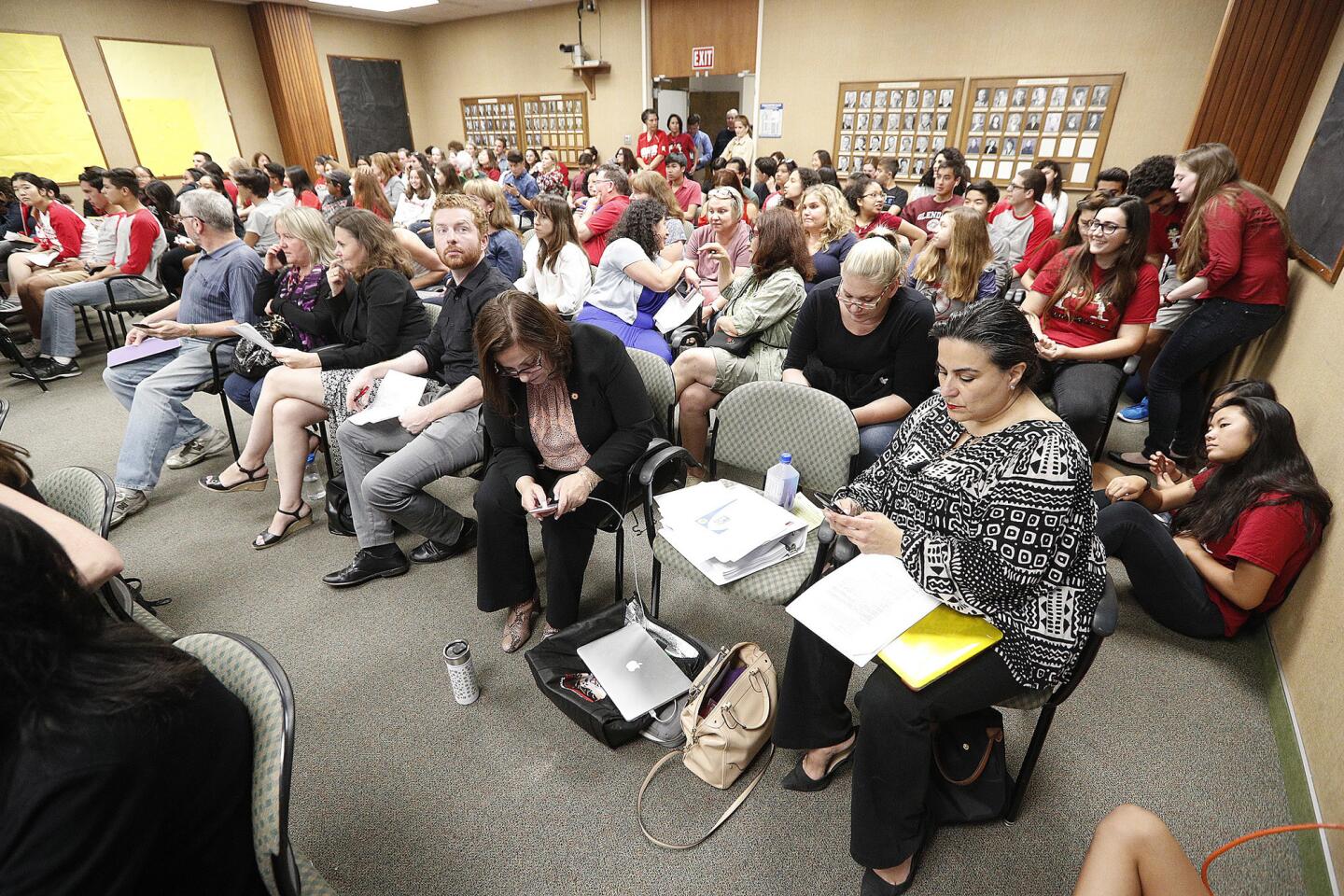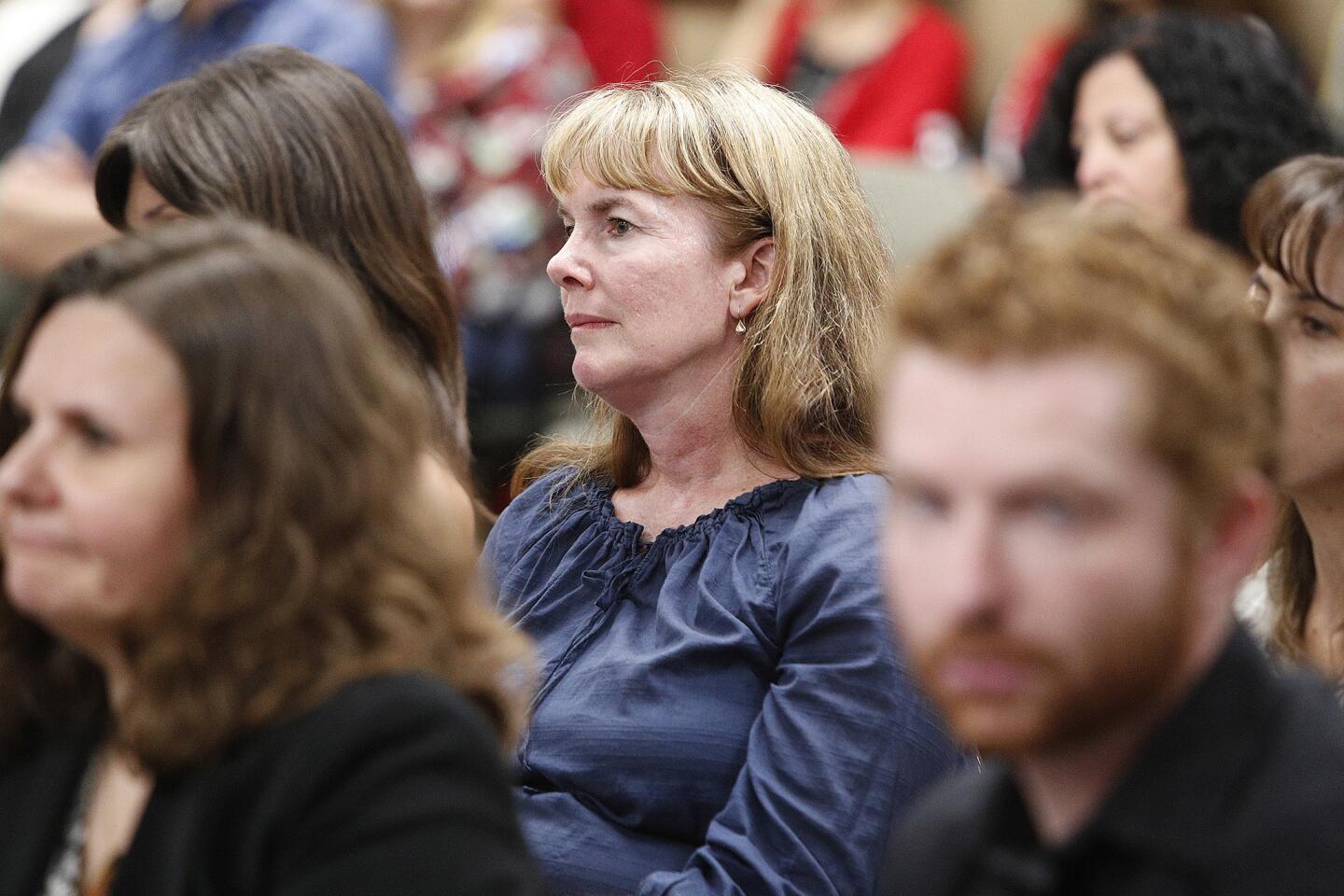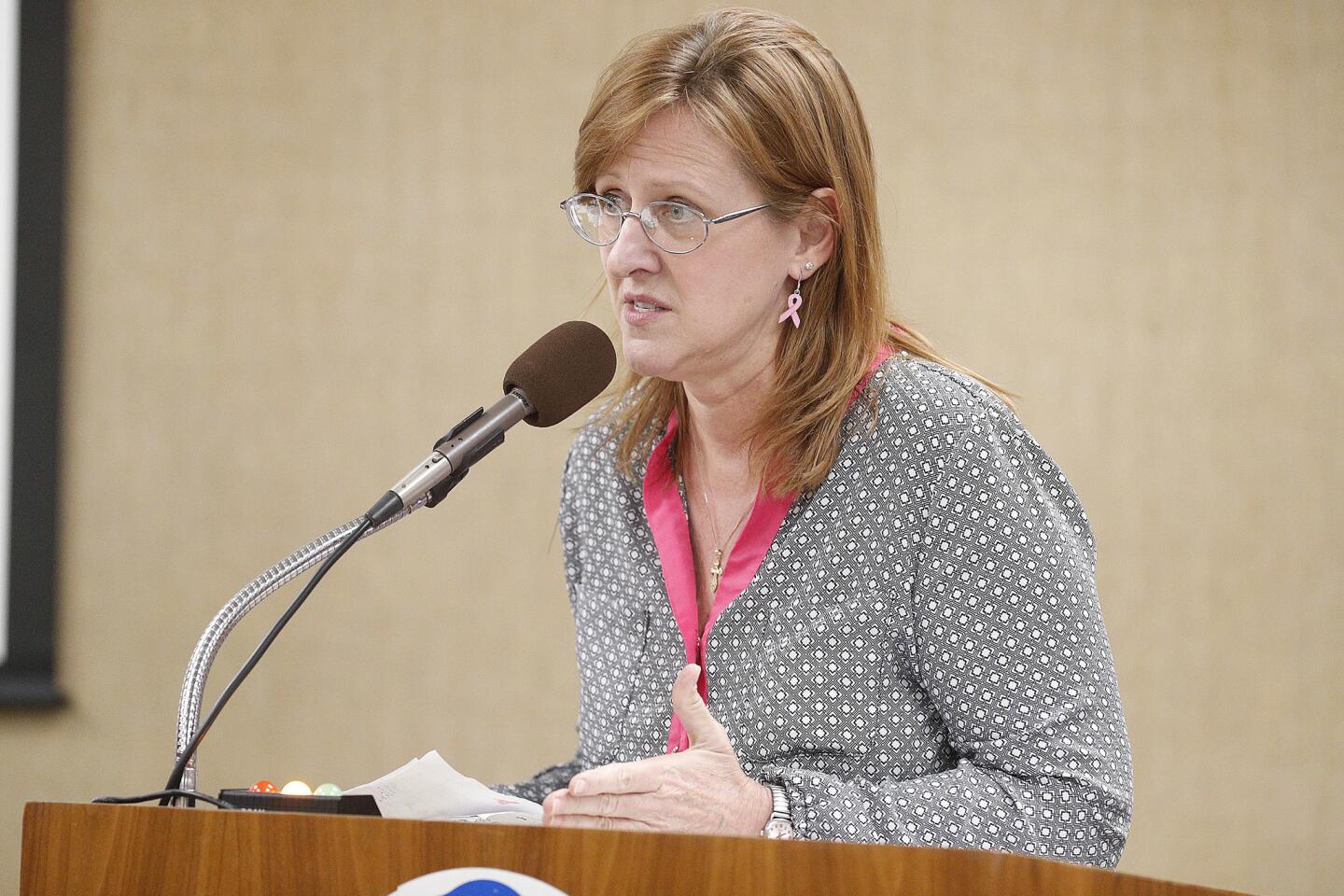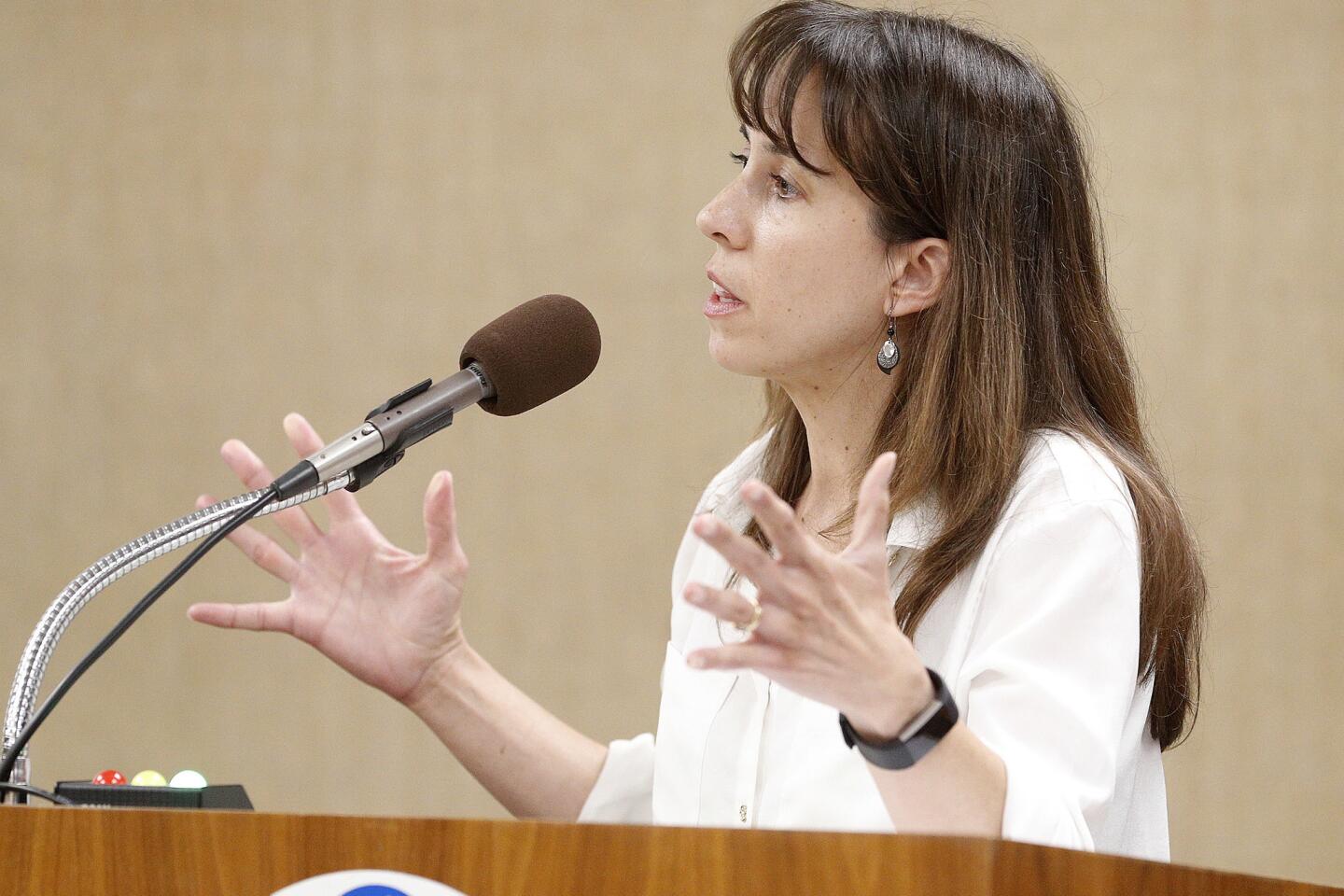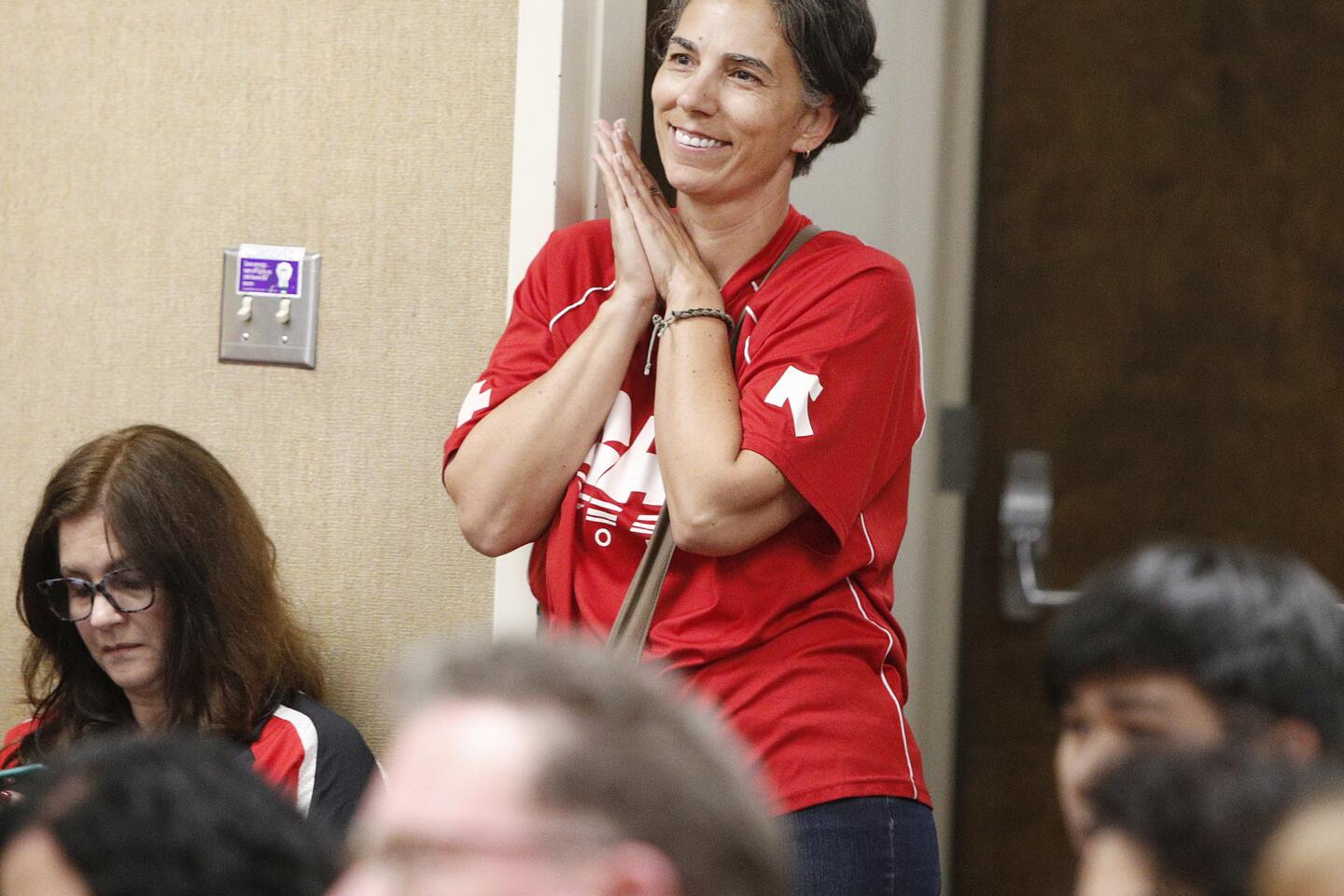Glendale Unified’s mathematics gridlock continues
The slow-moving saga over the future of Glendale Unified’s high school math curriculum was elongated another two weeks following a 5-0 vote by school board members Monday.
Board members rejected the recommendation of Supt. Winfred Roberson Jr. and his district staff for the single adoption of the less-conventional College Preparatory Mathematics system, or CPM, three hours after dozens of members of the public spoke passionately for and against the curriculum.
The move further exasperated months of gridlock as the district had hoped to secure a system for implementation over the next three years for integrated math I, II and III classes, beginning this fall.
Now, the board is left to make a decision at its final meeting of the academic school year on Tuesday, June 19.
“I want to apologize to the teachers, I want to apologize to the principals, and I want to apologize to the community for some of the mistakes that direction of planning and this going forward,” board president Greg Krikorian said. “This should not have happened, quite frankly. When I start seeing comments about teacher-versus-teacher and school-versus-school — last I checked, it was, we the people.”
At the heart of the district’s struggle is not just a question about textbooks, but teaching style, preference of learning and even identity.
District teachers, parents, students and alumni have grappled on whether the district should move forward with CPM or the more traditional teacher-led Houghton Mifflin Harcourt system, called HMH.
District officials define CPM as “a nontraditional approach to math instruction that values student engagement in collaborative learning settings.” The teacher facilitates learning activities where students discuss, write about and make sense of mathematical concepts using eight mathematical standards.
CPM calls for working in groups. Students are often teamed in groups of four and given real-world problems to solve, with limited involvement from teachers.
On the other hand, the district defines HMH, “as a more traditional math program that involves direct instruction from the teacher and provides examples and practice problems in a workbook format.”
Heading into Monday, battle lines had been drawn over single adoption of either HMH or CPM for all the district’s high schools.
Board members, however, expanded the discussion when they rejected the superintendent’s recommendation. Members Shant Sahakian and Armina Gharpetian requested that Roberson and his staff include a plan for dual implementation, with Sahakian suggesting that perhaps teachers, and not individual schools, choose which curriculum they want to instruct.
“Based on where we are today, I believe the only way forward is for dual adoption,” Sahakian said. “It’s the only way that allows teachers in the classroom to work with materials they’re comfortable with and to create time and space so that both books can be exposed to our [student] body, and it creates time and space for a long-term decision to be made down the road.”
The board’s inability to select a curriculum comes after Roberson and assistant superintendent Kelly King told board members on May 15 that a decision had to be made by June 4 so that textbooks could be available by the start of the new school year.
Prior to the board’s decision, an overflow crowd included 22 speakers — 12 in favor of HMH and 10 for CPM.
“I’m here today because I’m urging you to vote down CPM,” said Dr. Araz Marachelian, parent of a Rosemont Middle School student. “Don’t take my word for it; take the word of the parents, the kids and the teachers who came to this evaluation in a non-biased fashion who have spoken in a near-unified voice.”
Marachelian was part of a group of parents who expressed frustration over a wide range of issues, including a parent’s inability to help their children with homework.
“I felt like I was teaching a student who was completely drained, and I got her moving in the direction of appreciating math from really disliking math and having confidence to completely regressing, and it was frustrating to see,” said Hoover counselor Justin Stadel, who has an eighth grade step-daughter who struggled with CPM versus HMH.
Most HMH supporters Monday were teachers or parents from Hoover and Crescenta Valley high schools, while CPM backers were largely former or current students at Glendale High.
“I took CPM for all four years of high school and was very thankful as it has helped me tremendously in college,” said Alex Lee, a Glendale High 2015 graduate.
“I just finished my junior year at Chapman University, studying health sciences and, although I’ve only taken one math class in college, CPM has given me tools for even all of my science classes. CPM taught me how to effectively study with others and how to critically look at problems I may not initially understand,” he added.
Glendale teacher and water polo coach Narek Vardanian expressed dismay at what he considered dirty tricks by opponents of CPM.
“Individuals in our community have gone to the extreme of writing a letter with several statements defaming Glendale High School, its teachers and, worst of all, its students,” Vardanian said. “This letter, or smear campaign, has been circulated to various members of the community asking them to contact board members and urge them to vote a certain way, despite the evidence on the contrary.”
Public comments on Monday mirrored sentiments expressed on May 15, when seven teachers from Crescenta Valley and Hoover offered support for HMH.
At the previous meeting on May 1, a few members from Glendale High voiced their support of the CPM system.
It was in between the May 1 and 15 meetings when a shift occurred.
Roberson endorsed HMH on May 1, only to reverse course on May 15 and recommend CPM.
Roberson said at the May 15 meeting that he was in favor of single adoption of CPM, “because I believe that it is closer aligned to the Common Core, based upon details that I’ve gathered.”
Two weeks earlier, Roberson backed HMH because of a 19-18 vote by teachers on a poll conducted by the math curriculum study committee. The teachers surveyed took part in a pilot program in which they were trained in both systems and employed each between August and March.
While only a small sample size of 139 parents, roughly 7.4% who had students enrolled in integrated math I, voiced their opinion, that group was overwhelming in favor of HMH, 73% to 27%.
What the CPM system has in its favor is results.
Middle-school students tested before and after the pilot program saw a 51 percentage-point increase using CPM versus HMH, while the test results were 15 percentage points better (63% to 48%) at the high-school level for CPM.
CPM also received flying colors from EdReport.org, earning passing grades in focus and coherence, rigor and math practice as well as usability. On the flip side, HMH was not given a passing grade in regards to the standards of focus and coherence and was not evaluated in the other two aspects.
Monday’s vote continues a process that dates back to March 2017 as the district switched from a traditional mathematics pathway toward an integrated route, which combines concepts for algebra I, geometry and algebra II in a three-year package rather than as separate classes taken each year.
Since that change, the district has tinkered with different math books and concepts, highlighted by the pilot program.
Discussion about the issue began formally at the board’s meeting on April 17 and continued on May 1, 15 and on Monday and is expected to end on June 18.



